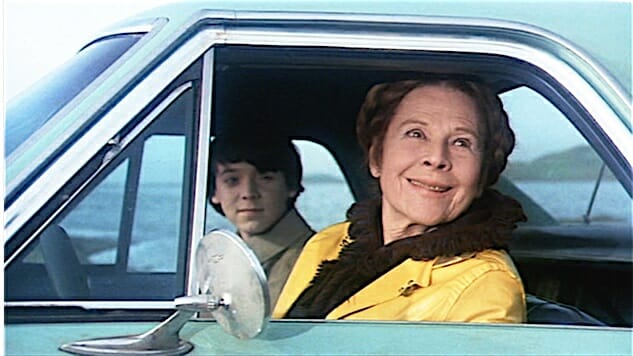Maude in Harold and Maude Represents the Best Manic Pixie Dream Girl

As coined by film critic Nathan Rabin after watching the “human embodiment of a hundred cheesy inspirational posters” played by Kirsten Dunst in the notorious Cameron Crowe dud Elizabethtown, the term “Manic Pixie Dream Girl” refers to a female supporting character in male-centric romantic comedies who exist solely to guide the male protagonist, usually going through an existential crisis, to appreciate the preciousness and unpredictability of life with the subtlety of a sledgehammer to the face. The MPDG is primarily a fantasy construct by romantic-minded beta males who desire an unattainably perfect combination of accessibility, attractiveness, infinite quirk, an adorable reaffirmation of life, and of course, a lack of personal goals and desires aside from fixing whatever’s wrong with the male protagonist. Over the years, apart from Dunst in Elizabethtown, a group of MPDGs have been identified by pop culture, ranging from Katherine Hepburn’s character from Bringing up Baby to the go-to culprit, Natalie Portman in Garden State. The trope even crosses gender boundaries, with the recent application of the Manic Pixie Dream Boy, like Ansel Elgort’s character in The Fault in Our Stars.
Since its identification, the MPDG cliché has been mocked, derided and parodied to death by many film buffs, mainly because they’re depthless creations of the male gaze that expects a female partner to act as their therapist, life coach, mother, and lover all in the same package. There have been rebuttals of the MPDG, in the form of Zooey Deschanel in 500 Days of Summer and Kate Winslet in Eternal Sunshine of the Spotless Mind, who are introduced in the first act as straight examples of the trope, only to distance themselves from it by applying a sobering dose of reality to the male character by turning out to be their own complex individuals with their own problems and neuroses. It’s hard to find an MPDG with depth, a three-dimensional character with relatable motivation and agenda, who nevertheless is tasked with dragging the male protagonist out of his funk via lively quirks and life-affirming platitudes. Honestly, the only one that comes to mind is Maude from Hal Ashby’s absurdist yet heartfelt romantic comedy masterpiece Harold and Maude, energetically brought to life by the great Ruth Gordon. The character is certainly associated with the MPDG trope, with some articles even deeming it to be the first one in cinema. First or not, I would argue that she’s the best example of an MPDG, and proves that with the right execution, even the most cloying character type can find depth and purpose.
When we first meet her, Maude is far from a young ingénue—she’s one week away from her eightieth birthday—yet she still exhibits prime MPDG behavior. She’s wistful, eccentric, quirky, impulsive, life affirming, warm-hearted, naturally comforting … the list goes on. In this case, her age, and by proxy her wisdom and experience, gives her a marked advantage over the likes of Dunst and Portman, whose fresh-eyed youth and lack of worldly knowledge makes their endless plethora of “sage” advice come across as intellectually unsound and emotionally stunted. Maude, on the other hand, for lack of a better term, has seen some shit. As a result, her embrace of every beautiful moment or thing in life, no matter how small or seemingly minor, happens demonstrating a dogmatic grasp on the finality and insignificance of her existence. Ashby and screenwriter Colin Higgins stay away from long expositional monologues to telegraph Maude’s back story, but the snippets that we get, a reference to a lost love and a blink-and-you’ll-miss close-up of her WWII concentration camp tattoo, gives the audience more than enough to appreciation the cultivation of her current state of mind. While other MPDGs try desperately to turn the natural sourness of life into a saccharine denial of reality, Maude embraces the equally bitter and sweet nature of her existence. She possesses a graceful acceptance of the cold indifference of the universe, which in turn motivates her to spread as much good will and love as possible before her clock runs out.